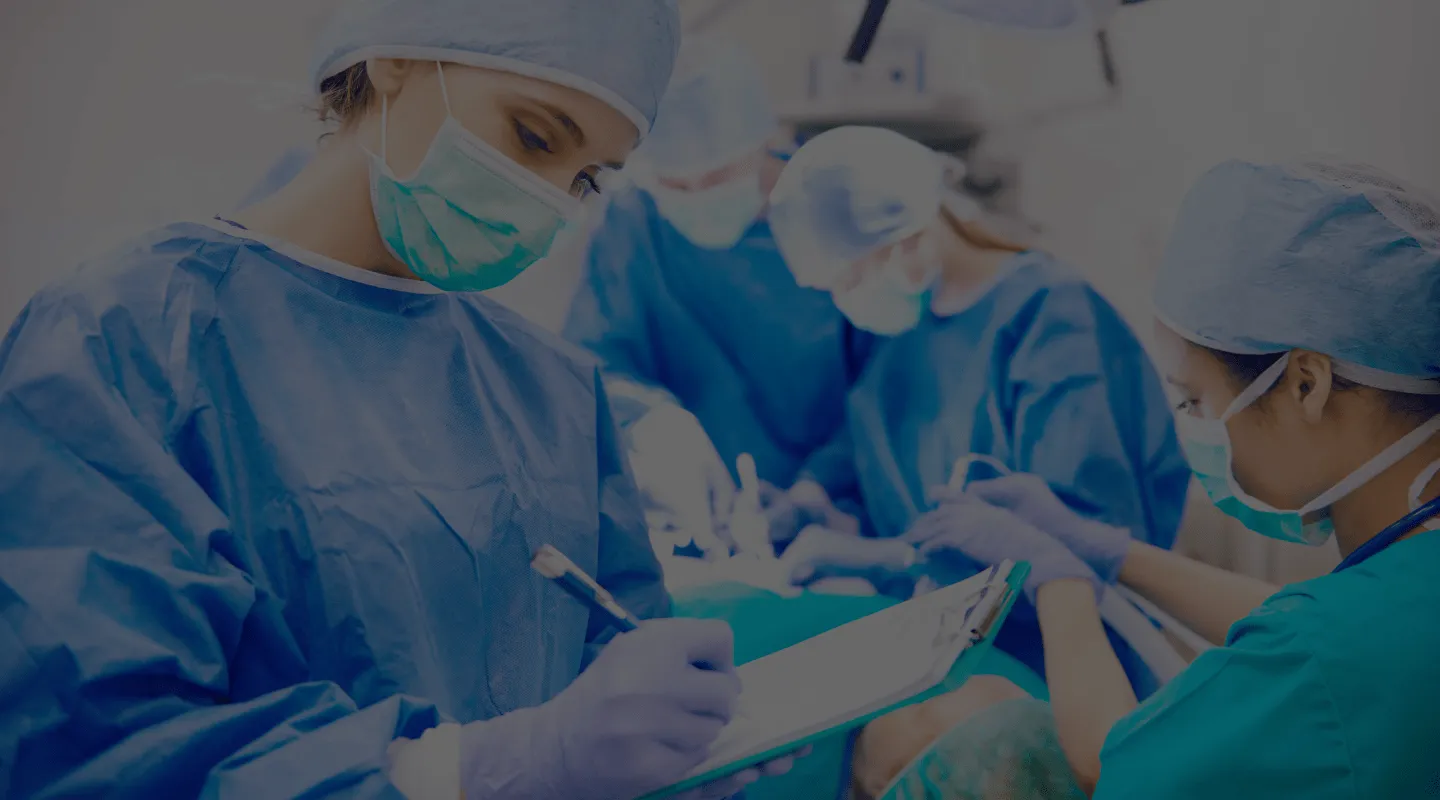
Heller Operation
Your Heller Operation in Tunisia at an affordable price
Improve your quality of life with a Heller operation performed by an experienced team in the best clinics in Tunisia
How does it work?
Heller Operation in Tunisia
Cardiomyotomy, also known as the Heller operation, is a surgical procedure used to treat achalasia of the lower esophageal sphincter. This disease manifests as a dilation of the esophagus due to a spasm of the muscles in its lower part. By performing this operation, it is possible to stop the reflux of food from the stomach to the esophagus. Below, we present the different information to know about this surgical intervention, including its indications, its procedure and its aftermath.
What is the Heller operation in Tunisia?
This procedure, known as extramucosal esophagocardiomyotomy, is recommended for people suffering from achalasia: a condition characterized by irregular or absent contractions of the esophagus, leading to various digestive disorders such as food reflux and chest pain. The exact causes of this condition are still poorly understood, although it can appear in patients with certain viruses. The aim of the Heller operation is to treat digestive disorders caused by achalasia by dilating the lower esophageal sphincter. The surgeon performs a cardiotomy by making an incision in the muscular layer of the cardia, located between the esophagus and the stomach, while preserving the mucosa. Thanks to this intervention, he will be able to restore the angle of His, the one formed between the esophagus and the stomach, and thus stop the food reflux. Many medical treatments have been studied to relieve the symptoms of this disorder, however none have yet yielded satisfactory results. The only effective option for reducing symptoms seems to be the surgical procedure.
Heller Operation: What you need to know before the operation
In order to ensure the smooth running of the Heller operation, it is essential to prepare well beforehand, as with any surgical intervention. This involves compiling a complete medical file including a complete health check-up and blood tests. It is also necessary to undergo esophageal manometry, which measures the pressure in the esophagus, as well as a barium X-ray to establish a precise diagnosis. During pre-operative consultations, you will have the opportunity to discuss with your surgeon the upcoming procedure, the objectives set and the aftermath of the operation. He will provide you with a detailed list of preparations to make a few weeks before and the day before the operation. A meeting with the anesthetist should also be scheduled before the operation.
What is the cost of the Heller operation?
If you opt for a Heller operation in Tunisia, you will obtain an excellent value for money, without compromising on the competence of our world-renowned expert surgeons and the modernity of our medical infrastructure. Get a quote today without hesitation!
How is the procedure performed?
The procedure is performed under general anesthesia, and its duration will depend on the surgical techniques used during the operation. To perform the cardiomyotomy, the surgeon will use laparoscopy, a method that involves small incisions to insert a tube with a miniature camera and surgical instruments. Thanks to a screen, the surgeon will be able to observe in real time the inside of the abdomen without having to open it, thus simplifying the procedure. Compared to a classic surgical intervention, this method is much less invasive and requires only small incisions, leaving very discreet scars after the operation. For some surgeons, there is an alternative in the performance of the dilation: the use of a balloon. In this method, the surgeon inserts a balloon which he inflates to dilate the sphincter. Although this procedure is as effective as the first, it nevertheless presents a potential risk of esophageal perforation, although this is very rare.
What are the postoperative consequences?
The Heller operation carries risks, like any other surgical intervention. Although rare, complications can occur during the operation or after your discharge from the clinic. These complications include healing problems, reactions to anesthesia, infections, or esophageal perforation during the balloon dilation procedure. Before undergoing the intervention, your surgeon will inform you about the potential risks and provide you with all the necessary information about the postoperative consequences. When a patient undergoes a cardiomyotomy, he may be exposed to an increased risk of gastroesophageal reflux. In such cases, it is possible to combine a fundoplication with the cardiomyotomy to counter this problem. Fundoplication is a surgical procedure aimed at preventing acid reflux into the esophagus. After diagnosis, the surgeon will determine the best approach to adopt depending on the patient’s specific situation.
What are the treatment results?
Whether your surgeon chooses between cardiomyotomy or balloon dilation, both techniques offer excellent chances of success (although cardiomyotomy is generally more effective than balloon dilation). It is important to note that this intervention cannot definitively solve the problem (to date, no treatment has managed to completely cure achalasia), but can considerably reduce the symptoms associated with this digestive disorder.
Our advantages


Contact and quote request for a Heller operation
Do not hesitate to contact us for any questions, concerns or for more information about our program. Our experienced team is there to support you every step of the way and answer all your questions. We will be delighted to work with you and guarantee you an unforgettable experience during your stay in Tunisia for the Heller Operation. Your well-being is our top priority, which is why we offer you personalized and quality support. Don’t wait any longer, contact us today to receive a free quote without obligation.
Your health, our priority.
Request your free quote.
Frequently Asked Questions
Yes, the Heller operation can be performed minimally invasively using laparoscopic surgery. This allows for faster recovery, less postoperative pain, and smaller scars.
Specific risks include esophageal perforation, gastroesophageal reflux, infection, bleeding, and stenosis (narrowing) of the esophagus.
Preparation may include pre-operative examinations, discontinuation of certain medications, fasting the day before the operation and discussion of the complete medical history with the surgeon.
The typical length of hospital stay is 2 to 3 days, but this may vary depending on the patient’s recovery and the absence of postoperative complications.
The success rate is high, with approximately 90% of patients reporting significant improvement in achalasia symptoms after the operation.
Non-surgical alternatives include pneumatic dilation, botulinum toxin injections, and medications to relax the esophageal muscle, although these methods are often less effective in the long term.
Yes, although rare, the Heller operation can be performed on children with achalasia, with specific adjustments for the anatomy and needs of young patients.
Follow-up includes regular consultations with the surgeon, endoscopies to check the healing of the esophagus, and possibly dietary and medication adjustments to manage reflux.
After the operation, a liquid diet is initially recommended, followed by a gradual transition to soft and solid foods, avoiding spicy, acidic and difficult-to-swallow foods.
Signs of complications include severe pain, fever, breathing difficulties, bleeding, and persistent swallowing problems. It is essential to contact a doctor immediately if these symptoms appear.
